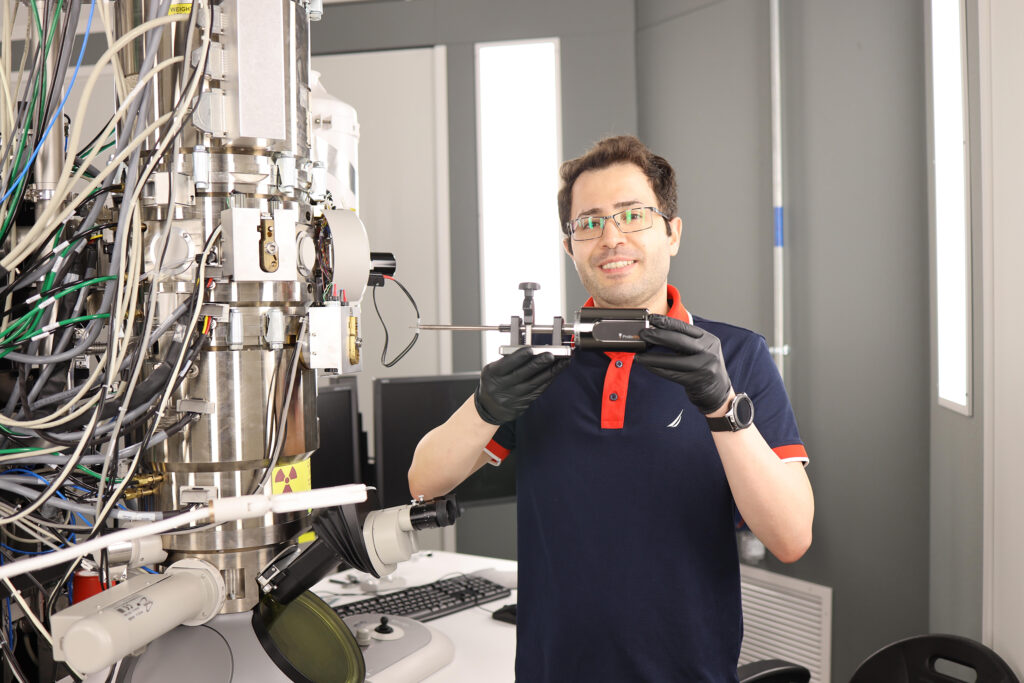Amir Soleymani Improves the Understanding of PEMFC Catalyst Materials and Addresses Future Opportunities in the Field
By Kyra Arena, Written Communications Assistant

MSE graduate student Amir Soleymani is holding an in-situ liquid cell holder – used in the aberration-corrected transmission electron microscope (Titan Themis) to acquire high-resolution images and videos as the reactions progress inside the cell.
Graduate student Amir Soleymani co-authored a research paper with MSE Assistant Professor Jasna Jankovic and Electron Microcopy Research Scientist Lucas R. Parent. The paper is entitled “Challenges and Opportunities in Understanding Proton Exchange Membrane Fuel Cell Materials Degradation Using In-Situ Electrochemical Liquid Cell Transmission Electron Microscopy” and was published in the peer-reviewed journal, Advanced Functional Materials. The paper focuses on improving the performance and durability of proton exchange membrane fuel cells (PEMFCs), which are alternative clean energy generation devices addressing challenges caused by environmental pollution from fossil fuel consumption. Improvement of PEMFCs can be achieved by observing and understanding their catalyst layers. Soleymani and his co-authors used In-situ electrochemical liquid cell transmission electron microscopy (TEM) techniques to study PEMFCs materials evolution and degradation. The research featured in the paper contributes to understanding the challenges and opportunities associated with applying the In-situ microscopy techniques in the field of fuel cell materials.
Soleymani joined UConn in 2018 as a doctoral student in MSE. He was Assistant Professor Jankovic’s first student to join her research group that is dedicated to advancing clean energy technology. Previously, he completed his BS and MS in MSE at Isfahan University of Technology, and MS in mechanical engineering at Tennessee Technological University. After his approaching completion of his Ph.D., Soleymani wishes to continue his research in clean energy and work in the automotive industry.
Published: February 9, 2022
Categories: Center for Clean Energy Engineering (C2E2), graduate students, news, research
Available Archives